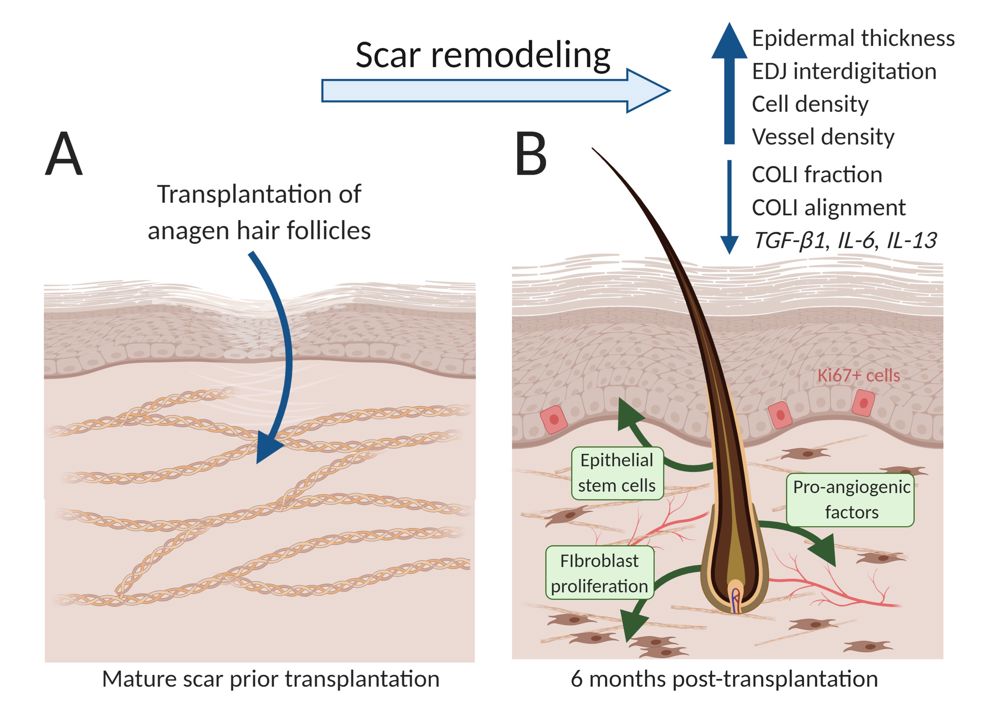Scar tissue in the skin lacks hair, sweat glands, blood vessels and nerves, features that are crucial for regulating body temperature, as well as detecting pain and other sensations. Scarring can also impair mobility and organ function, and can often carry an emotional toll alongside the physical complications.
Related content
Compared to scar tissue, healthy skin undergoes constant remodelling by the hair follicle. Hairy skin heals faster and scars less than non-hairy skin, with hair transplants previously been shown to aid wound healing. Inspired by this, the researchers hypothesised that transplanting growing hair follicles into scar tissue might induce scars to remodel themselves. Following the transplant, the treated scar tissue harboured new cells and blood vessels, remodelled collagen to restore healthy patterns, and expressed genes found in healthy, unscarred skin.

“After scarring, the skin never truly regains its pre-wound functions, and until now all efforts to remodel scars have yielded poor results,” explained lead author Dr Claire Higgins, from Imperial’s Department of Bioengineering.
“Our findings lay the foundation for exciting new therapies that can rejuvenate even mature scars and restore the function of healthy skin.”
The Imperial team worked with Dr Francisco Jiménez, lead hair transplant surgeon at the Mediteknia Clinic and Associate Research Professor at University Fernando Pessoa Canarias, in Gran Canaria, Spain. Hair follicles were transplated into the mature scars on the scalp of three participants in 2017.
The researchers selected the most common type of scar, called normotrophic scars, which usually form after surgery. They microscope imaged 3mm-thick biopsies of the scars just before transplantation, and then again at two-month intervals for six months. It was found that the follicles inspired significant architectural and genetic shifts in the scars towards a profile of healthy, uninjured skin.
"This work has obvious applications in restoring people’s confidence, but our approach goes beyond the cosmetic as scar tissue can cause problems in all our organs,” Dr Higgins continued.
“While current treatments for scars like growth factors focus on single contributors to scarring, our new approach tackles multiple aspects, as the hair follicle likely delivers multiple growth factors all at once that remodel scar tissue. This lends further support to the use of treatments like hair transplantation that alter the very architecture and genetic expression of scars to restore function.”
Published in Nature Regenerative Medicine, the work was funded by the Medical Research Council and Engineering and Physical Sciences Research Council.











Guest blog: exploring opportunities for hydrogen combustion engines
"We wouldn't need to pillage the environment for the rare metals for batteries, magnets, or catalisers". Batteries don't use rare...